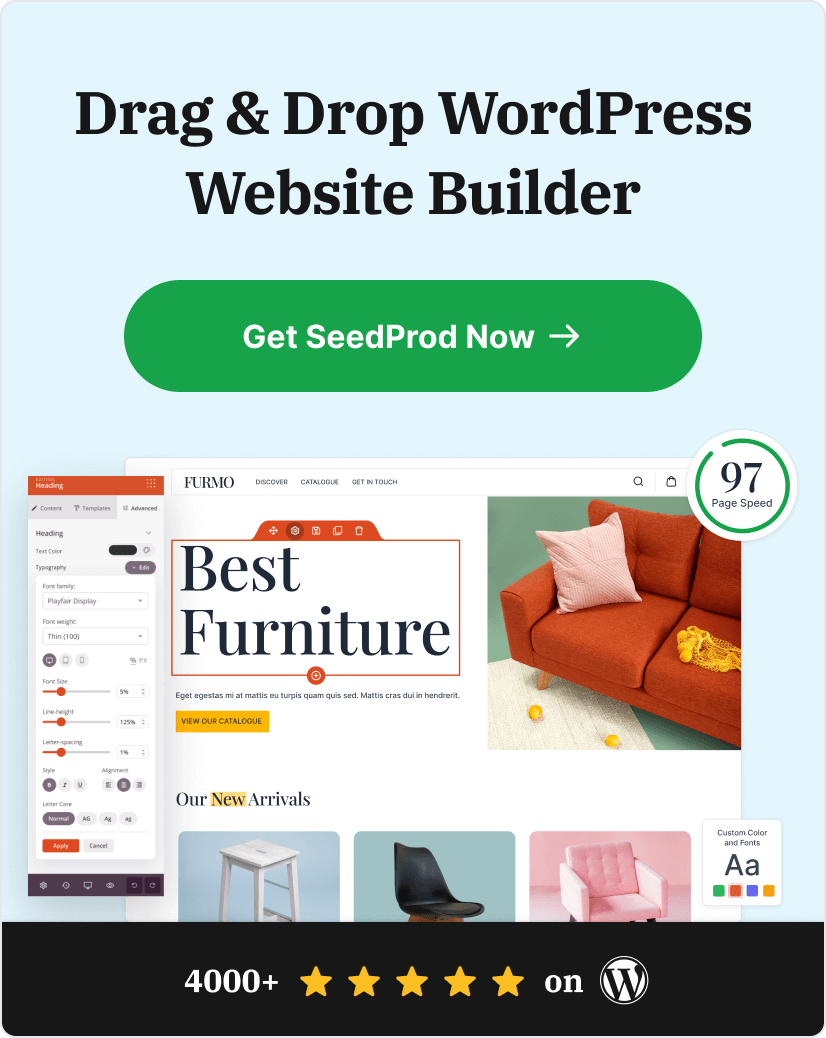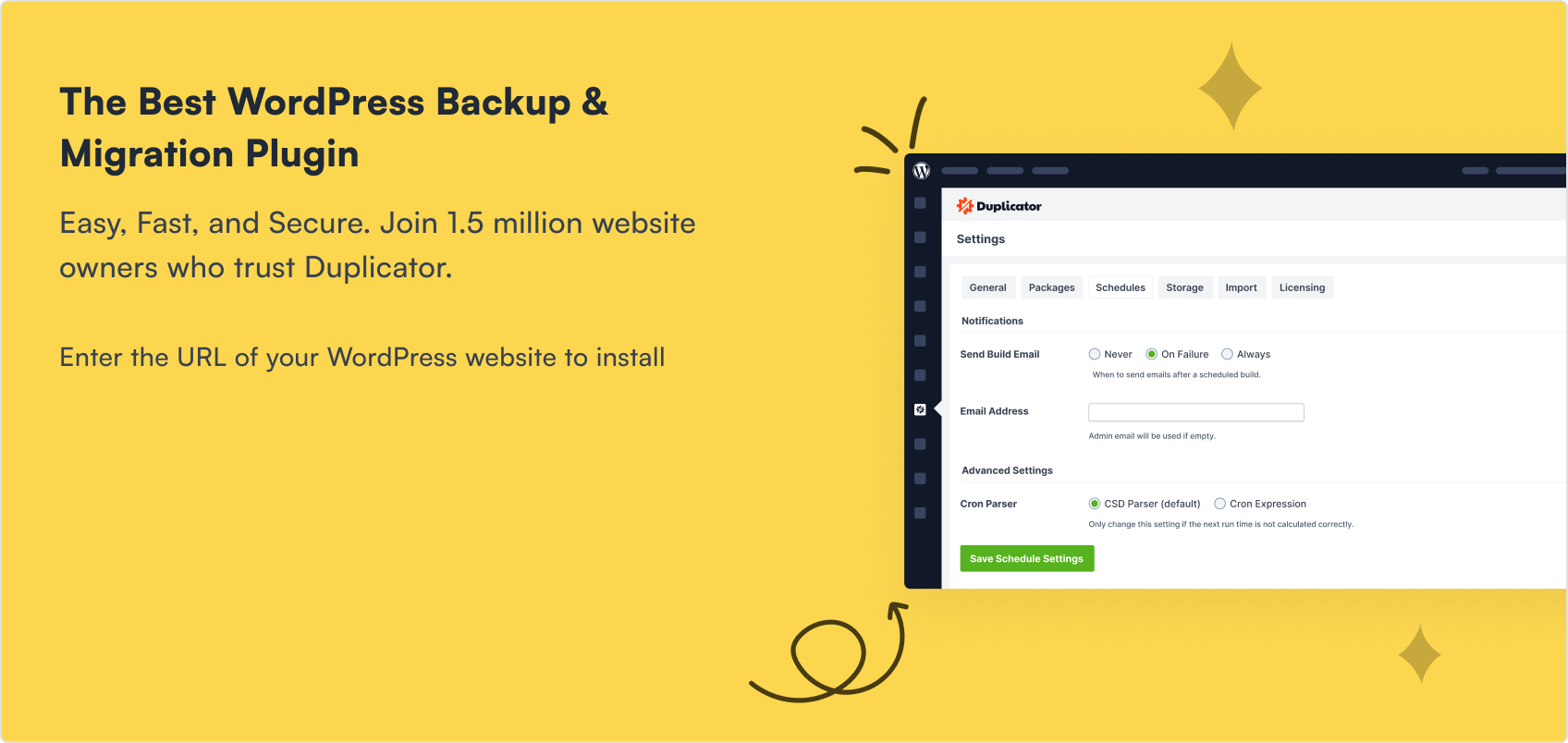If you want more sign-ups and sales from your landing pages, focus on improving your conversion rate. Even small lifts like moving a call-to-action or trimming a form, can turn more visitors into customers without buying extra traffic.
The challenge is knowing which changes actually work. That’s why I’ve pulled together proven tactics backed by examples you can apply today.
Here’s how to increase landing page conversions step by step:
- 1. Target the Right Audience
- 2. Write Headlines That Connect Emotionally
- 3. Ensure Your Copy Understands the Problem
- 4. Offer Value Above the Fold
- 5. Use the Right Images and Videos
- 6. Build Trust with Reviews, Testimonials, and Badges
- 7. Keep Forms Short and Simple
- 8. Make Your Call-to-Action Stand Out
- 9. Optimize Page Speed
- 10. Personalize the Experience
- 11. Track Behavior and Run A/B Tests
- 12. Bonus: Always Keep Testing
What Is a Good Landing Page Conversion Rate?
Landing pages are critical for turning visitors into customers. Even a small lift in your landing page conversions can make a big difference. For example, if a page gets 100,000 visits a month and your conversion rate improves from 2% to 2.5%, that’s 500 more customers without any extra traffic.
If you want a deep dive into what conversion rates are, how to calculate them, and what counts as “good” in your industry, check out our full guide on landing page conversion rates.
In this post, we’ll skip the definitions and focus on practical steps you can use right now to increase your landing page conversions.
Tips to Increase Landing Page Conversions
Now that you know what a conversion rate is and the average rate across industries, how can you improve your landing page’s conversion rates?
Check out the tips below to get started.
1. Target the Right Audience
No landing page will convert if it’s shown to the wrong people. Before you worry about design, make sure your page is reaching the visitors most likely to take action.
Ask yourself:
- Who will read this page?
- What do I want them to do?
- What problem are they trying to solve?
Your headline, copy, testimonials, and call-to-action buttons should all reflect those answers. If your page isn’t aligned with your audience’s intent, your conversion rate will always suffer.
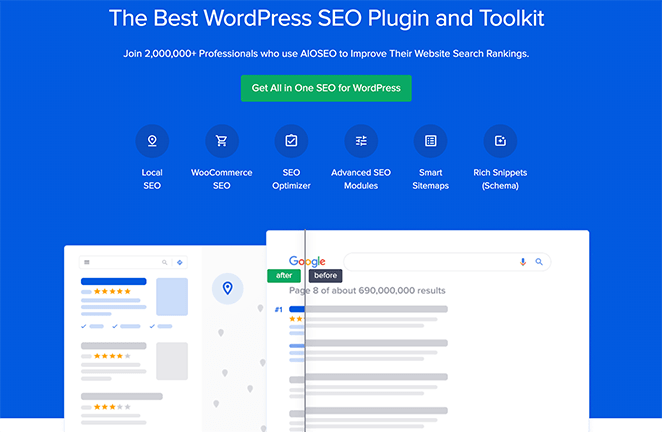
In this example, All in One SEO speaks directly to users looking for an easy-to-use WordPress SEO plugin, leaving no confusion about the value offered.
2. Write Headlines That Connect Emotionally
Your headline is the first thing visitors see, and you only have a few seconds to grab their attention. A strong headline should spark curiosity, show value, and connect emotionally with your audience.
Generic headlines like “Welcome” or “Sign Up Today” rarely work. Instead, lead with your value proposition, the benefit users get if they stick around.
For example, Drip’s page instantly reassures visitors that they can “make strategic decisions with confidence,” addressing a common pain point for marketers.
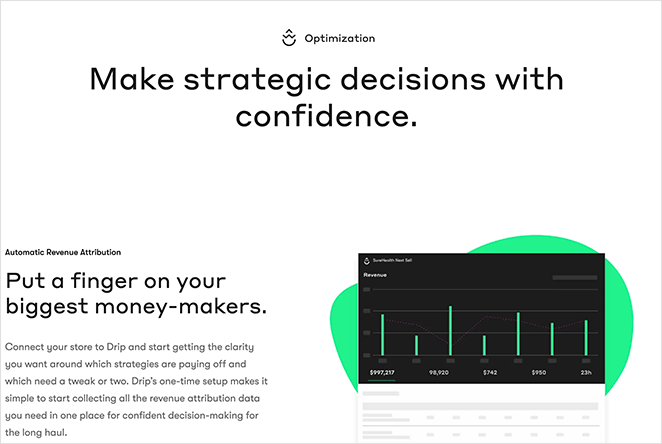
To write better headlines, try these approaches:
- Highlight a clear benefit (“Grow Your Email List in 24 Hours”)
- Address a fear or pain point (“Stop Losing Visitors at Checkout”)
- Use action-oriented words (“Get Started Free,” “Boost Conversions Today”)
For more ideas, see our list of landing page headline formulas that are proven to increase conversions.
3. Ensure Your Copy Understands the Problem
High-converting landing pages show visitors you understand their problem. If your copy doesn’t reflect their pain points, they won’t trust your solution.
Use your landing page text to mirror what your audience is thinking. Make it clear you know their struggle and can guide them to a solution.
A proven framework is the story model:
- Introduce a character like your visitor
- Show their problem
- Present your product as the guide
- Offer a simple plan to solve it
- Invite them to take action
- Show what failure looks like if they don’t act
- End with success
This kind of storytelling helps visitors picture themselves achieving their goal with your product, which builds trust and increases conversions.
4. Offer Value Above the Fold
The first screen visitors see (above the fold) is prime real estate. Don’t waste it on generic introductions. Show immediate value by explaining how your product or service improves their lives.
If people have to scroll to find your value proposition, many will leave before they ever see it. Make sure the benefit is clear right away.
Here’s a strong example from OptinMonster. Before you scroll, it’s obvious what they do and how their software helps small businesses grow.
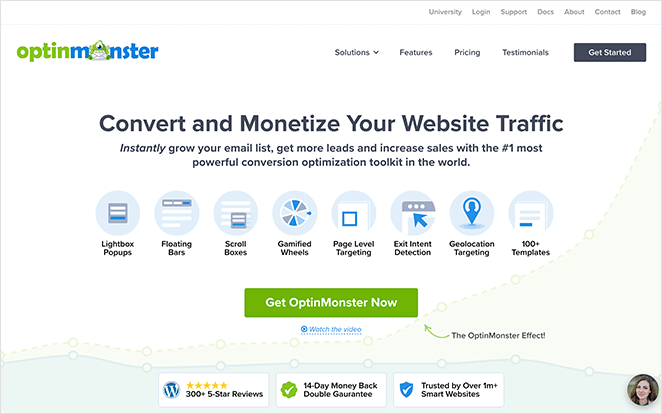
Ask yourself: if visitors only see the first screen, do they know what you offer and why it matters? If not, rewrite your top section to deliver that value instantly.
5. Use the Right Images and Videos
Visuals can make or break your landing page. The right image or video builds trust, creates emotion, and makes your offer easier to understand. The wrong one distracts or confuses visitors.
Every image should support your message. For example, Codecademy uses visuals that show learners exactly what success looks like, making the path forward feel achievable.

Videos are even more powerful for complex offers, especially in software or technical industries. A short demo or screencast can explain what paragraphs of text can’t, and keep visitors engaged longer.
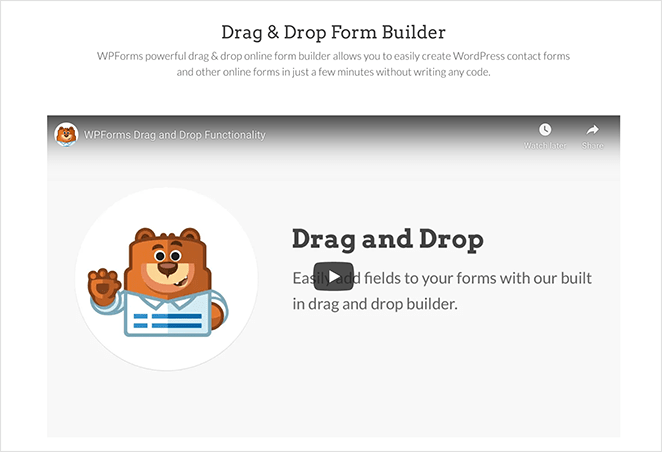
You don’t need a big production budget. Simple options like:
- A quick product walkthrough
- Answers to common questions
- A welcome video from your founder
- A case study or customer story
Pair your copy with visuals that reinforce the value of your offer, and you’ll boost both trust and conversions.
Check out our guide on how to create a video landing page for the best results.
6. Build Trust with Reviews, Testimonials, and Badges
Most visitors won’t take action on your landing page unless they trust you. That’s why social proof and trust signals are essential for increasing conversions.
Customer reviews and testimonials show real people are happy with your product. Place them near key conversion points, like your call-to-action, so they reduce doubt right when it matters most.
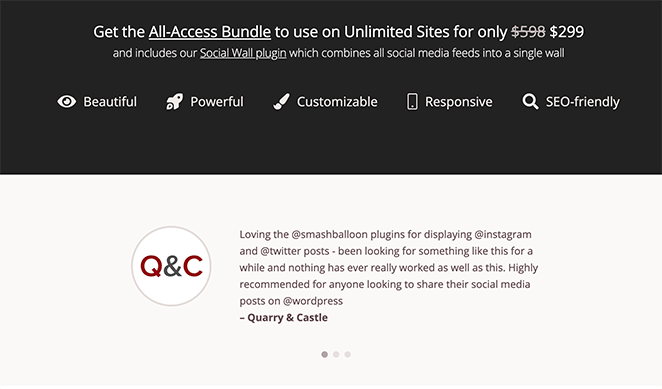
Trust badges work the same way, borrowing credibility from brands and institutions people already recognize. Popular examples include:
- SSL security icons
- Money-back guarantees
- Accepted payment logos
- Industry awards
- Customer or client logos

Together, reviews, testimonials, and trust badges signal that it’s safe to take the next step. The more credible your page feels, the higher your conversions will climb.
7. Keep Forms Short and Simple
Long forms scare people away. Ask only for the information you truly need right now.
For most offers, 2–3 fields (name, email) are enough. You can collect more details later in the journey.
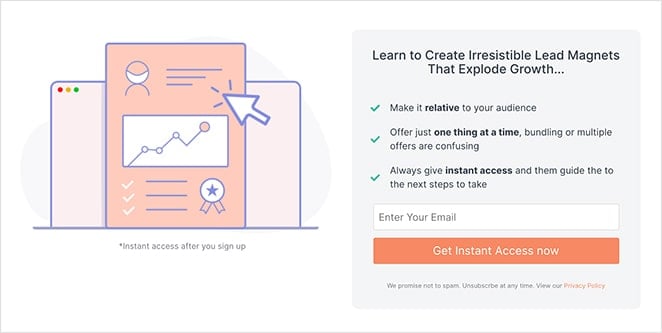
Shorter forms build trust and reduce abandonment. If you must add a field, explain why or make it optional.
Need ideas to combat drop-offs? See this guide on reducing form abandonment.
8. Make Your Call-to-Action Stand Out
Your CTA is the decision point. Make the text crystal clear, the button visually distinct, and the placement impossible to miss.
Write specific, benefit-driven copy. Skip generic labels like “Submit.” Tell visitors exactly what they’ll get when they click.
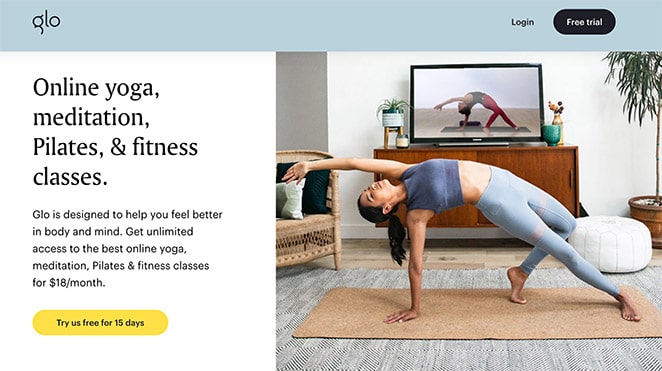
Glo’s button sets a clear expectation (a 15-day free trial). Use first-person or outcome-focused language like “Start My Free Trial,” “Get the Demo,” or “Send Me the Guide.”
For more ideas, see our call-to-action examples and CTA best practices.
Design for contrast and tap-ability. Test button color, size, and shape so the CTA stands out from the page and is easy to tap on mobile. Give it breathing room — crowded CTAs get ignored.
Place CTAs where intent peaks. Use one CTA above the fold and repeat after key sections that build desire (features, proof, pricing).
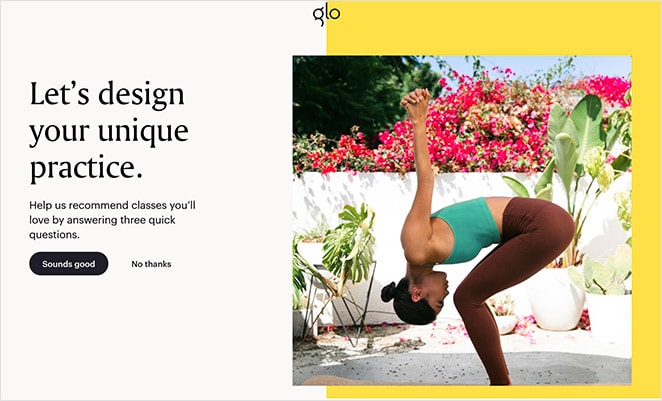
In this flow, an early, low-friction CTA (“sounds good”) nudges visitors forward, then a stronger CTA closes after they’ve seen the value.
Use visual cues to guide attention. Arrows and lines (explicit cues) or photos where a person looks toward the button (implicit cues) direct the eye to your CTA.
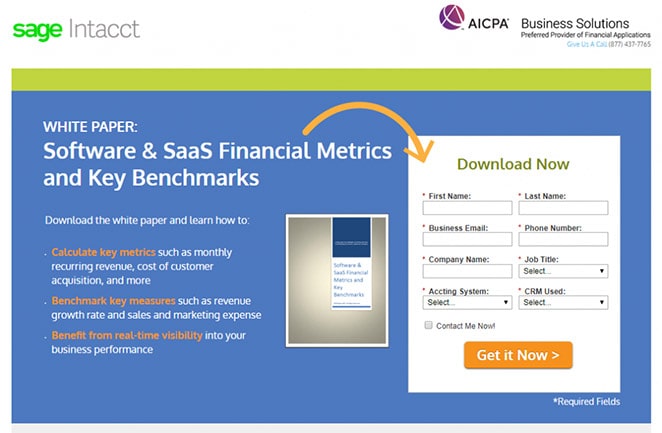
Test one change at a time. Try two versions of a single variable — copy, color, size, or placement — so you can clearly see what lifts clicks and conversions.
9. Optimize Page Speed
Slow pages don’t convert. If your landing page takes more than a few seconds to load, visitors bounce before they ever see your offer.
Start by testing your page and fixing the biggest bottlenecks first.
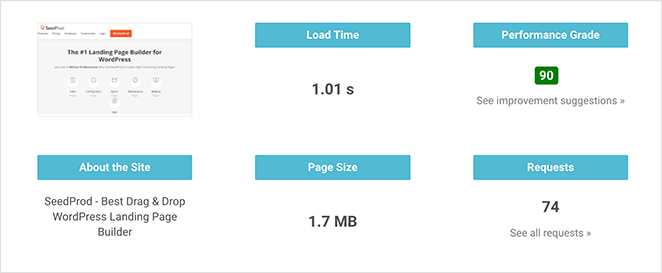
Run your URL through IsItWP’s free speed test, then fix the issues it flags.
- Compress and properly size images
- Defer non-critical JavaScript
- Use page caching and a CDN
- Remove heavy/unused plugins and scripts
- Minimize third-party embeds and tracking
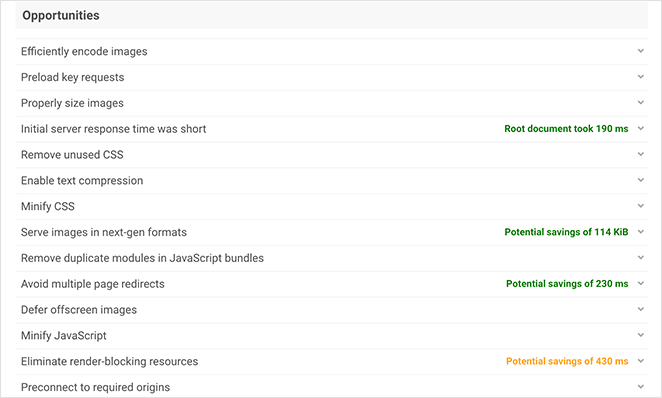
Still building your page? Choose a lightweight builder to avoid bloat.
SeedProd keeps code lean so your landing pages load fast and convert better. For more ideas, see our landing page optimization tips and the best WordPress landing page plugins.
10. Personalize the Experience
People convert more when the page speaks directly to them. Personalize copy, offers, and CTAs based on who the visitor is and what they care about.
Easy ways to personalize:
- Match the message to the source: Use the same promise as the ad or email that sent them.
- Use location awareness: Show shipping, currencies, or hours based on country or city.
- Tailor CTAs to intent: Warm visitors see “Start My Free Trial.” Cold visitors see “Watch a 2-Minute Demo.”
- Welcome returning visitors: Replace “Get Started” with “Pick Up Where You Left Off.”
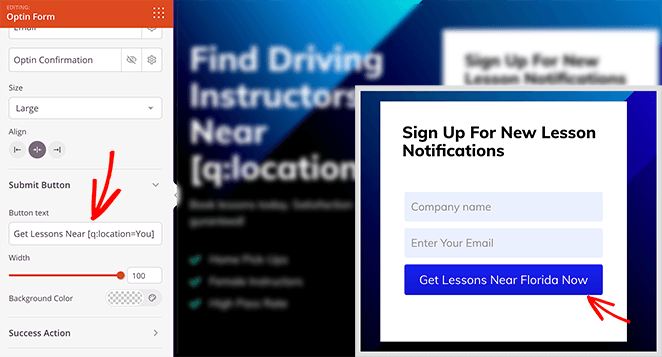
With SeedProd, you can swap headlines and button text with dynamic content so each visitor sees the most relevant message.
Ideas to try now:
- Update the headline with the keyword or campaign UTM they came from.
- Show industry-specific testimonials to visitors from that segment.
- Offer a first-time buyer coupon to new users and a loyalty perk to returning users.
- Change the hero image for mobile visitors so it loads fast and fits small screens.
For a full walkthrough, see our guide on how to create personalized landing pages.
11. Track Behavior and Run A/B Tests
If you don’t measure what’s happening on your landing page, you can’t improve it. Tracking and A/B testing show you what works and what doesn’t—so you’re not guessing.
Start with behavior tracking:
- Heatmaps: See where visitors click, scroll, or stop reading.
- Session recordings: Watch how people actually interact with your page.
- Form analytics: Spot where users abandon signups.
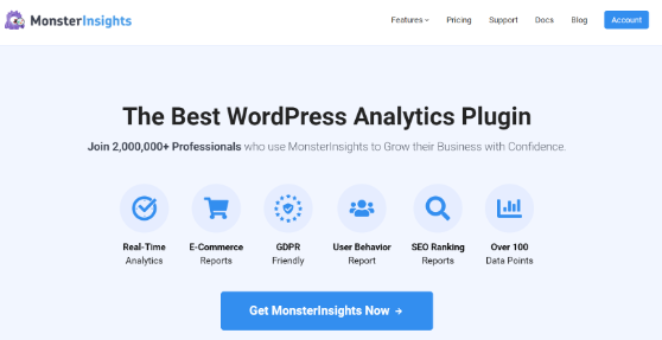
For WordPress sites, MonsterInsights pulls Google Analytics reports into your dashboard, so you see performance without leaving WordPress.
Then run A/B tests:
- Test different headlines or CTAs to see which drives more clicks.
- Change form length—fewer fields often mean more conversions.
- Experiment with button color, placement, or copy.
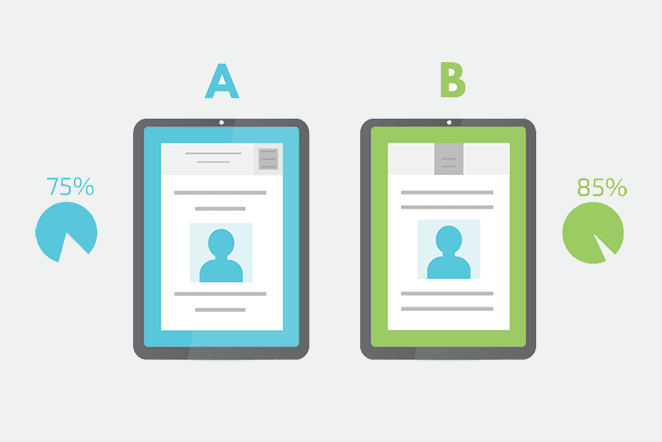
SeedProd makes A/B testing simple by letting you duplicate a page, tweak one element, and send half your traffic to each version. That way, you’ll know for sure which design actually converts better.
See our full guide on how to do A/B testing in WordPress.
12. Bonus: Always Keep Testing
There’s no final version of a high-converting landing page. What works today might underperform tomorrow as audiences, offers, and competitors change.
The key is to keep testing. Treat every page element as an experiment—headlines, CTAs, layouts, even images. Change one thing at a time and let the data guide your next move.

Small, ongoing improvements compound over time. A 2% lift here and a 3% lift there can add up to hundreds, or thousands of extra conversions each month.
Remember: the highest-converting landing pages aren’t built overnight. They’re refined through consistent testing, tracking, and iteration.
FAQs on Increasing Landing Page Conversions
Improving your landing page conversions doesn’t require guesswork. By targeting the right audience, writing stronger headlines, simplifying forms, and building trust, you can turn more visitors into leads and customers without buying extra traffic.
Remember, small changes add up. Keep testing, track your results, and refine as you go. The best-performing landing pages aren’t built once—they’re improved over time.
You may also find the following guides helpful:
- Landing Page Navigation Is Dead: Here’s Why
- Landing Page URL Examples and Best Practices
- Landing Page Not Converting? 9 Tips to Fix It Fast
- Anatomy of a Landing Page: 9 Essential Elements
Thanks for reading! We’d love to hear your thoughts, so please feel free to join the conversation on YouTube, X and Facebook for more helpful advice and content to grow your business.




